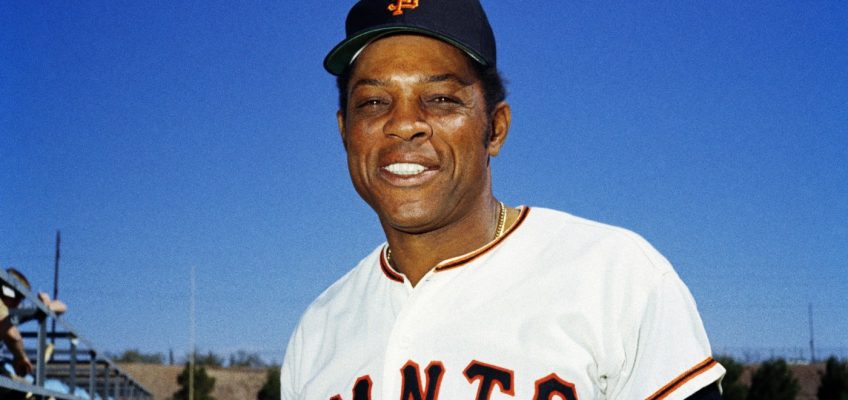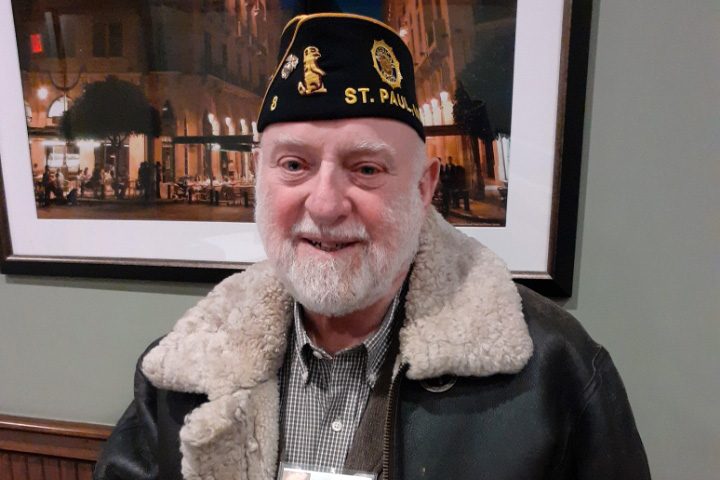Willie Mays, the electrifying “Say Hey Kid” whose singular combination of talent, drive and exuberance made him one of baseball’s greatest and most beloved players, has died. He was 93.
Mays’ family and the San Francisco Giants jointly announced Tuesday night he had died earlier in the afternoon.
“My father has passed away peacefully and among loved ones,” son Michael Mays said in a statement released by the club. “I want to thank you all from the bottom of my broken heart for the unwavering love you have shown him over the years. You have been his life’s blood.”
The center fielder, who began his professional career in the Negro Leagues in 1948 — and played briefly with Minneapolis Millers in the Spring of 1951 — was baseball’s oldest living Hall of Famer. His signature basket catch and dashes around the bases with his cap flying off personified the joy of the game. His over-the shoulder catch of a long drive in the 1954 World Series is baseball’s most celebrated defensive feat.
Mays died two days before a game between the Giants and St. Louis Cardinals to honor the Negro Leagues at Rickwood Field in Birmingham, Ala.
“All of Major League Baseball is in mourning today as we are gathered at the very ballpark where a career and a legacy like no other began,” Commissioner Rob Manfred said. “Willie Mays took his all-around brilliance from the Birmingham Black Barons of the Negro American League to the historic Giants franchise.
“Willie inspired generations of players and fans as the game grew and truly earned its place as our National Pastime. … We will never forget this true Giant on and off the field.”
Few were so blessed with each of the five essential qualities for a superstar: the ability to hit for average and power, speed, fielding and throwing. Fewer so joyously exerted those qualities, whether launching home runs, dashing around the bases, loose-fitting cap flying off his head, or chasing down fly balls in center field and finishing the job with his trademark basket catch.
“When I played ball, I tried to make sure everybody enjoyed what I was doing,” Mays told NPR in 2010. “I made the clubhouse guy fit me a cap that when I ran, the wind gets up in the bottom and it flies right off. People love that kind of stuff.”
Over 23 major league seasons, virtually all with the New York/San Francisco Giants but also including one in the Negro Leagues, Mays batted .301, hit 660 home runs, totaled 3,293 hits, scored more than 2,000 runs and won 12 Gold Glove. He was Rookie of the Year in 1951, twice was named the Most Valuable Player and finished in the top 10 for the MVP 10 other times.
He was voted into the Hall in 1979, his first year of eligibility, and in 1999 followed only Babe Ruth on The Sporting News’ list of the game’s top stars. (Statistician Bill James ranked him third, behind Ruth and Honus Wagner). The Giants retired his No. 24 and set their AT&T Park in San Francisco on Willie Mays Plaza.
For millions in the 1950s and ’60s and after, the smiling ball player with the friendly, high-pitched voice was a signature athlete and showman during an era when baseball was still America’s signature pastime. Awarded the Medal of Freedom by President Barack Obama in 2015, Mays left his fans with countless memories. But a single feat served to capture his magic — one so untoppable it was simply called “The Catch.”
In Game 1 of the 1954 World Series, the then-New York Giants hosted the Cleveland Indians, who had won 111 games in the regular season and were strong favorites in the postseason. The score was 2-2 in the top of the eighth inning. Cleveland’s Vic Wertz faced reliever Don Liddle with none out, Larry Doby on second and Al Rosen on first.
With the count 1-2, Wertz smashed a fastball to deep center field. In an average park, with an average center fielder, Wertz would have homered, or at least had an easy triple. But the center field wall in the eccentrically shaped Polo Grounds was more than 450 feet away. And there was nothing close to average about the skills of Willie Mays.
Decades of taped replays have not diminished the astonishment of watching Mays race toward the wall, his back to home plate; reach out his glove and haul in the drive. What followed was also extraordinary: Mays managed to turn around while still moving forward, heave the ball to the infield and prevent Doby from scoring even as Mays spun to the ground. Mays himself would proudly point out that “the throw” was as important as “the catch.”
“Soon as it got hit, I knew I’d catch the ball,” Mays told biographer James S. Hirsch, whose book came out in 2010.
“All the time I’m running back, I’m thinking, ‘Willie, you’ve got to get this ball back to the infield.’ ”
The Giants went on to sweep the Indians, with many citing Mays’ play as the turning point. The impact was so powerful that 63 years later, in 2017, baseball named the World Series Most Valuable Player after Mays even though it was his only moment of postseason greatness. He appeared in three other World Series, in 1951 and 1962 for the Giants and 1973 for the Mets, batting just .239 with no home runs in the four series. His one postseason homer was in the 1971 National League playoffs, when the Giants lost to the Pittsburgh Pirates.
But “The Catch” and his achievements during the regular season were greatness enough. Yankees and Dodgers fans may have fiercely challenged Mays’ eminence, but Mantle and Snider did not. At a 1995 baseball writers dinner in Manhattan, with all three at the dais, Mantle raised the eternal question: Which of the three was better?
“We don’t mean being second, do we, Duke?” he added.
Between 1954 and 1966, Mays drove in 100 or more runs 10 times, scored 100 or more 12 times, hit 40 or more homers six times, more than 50 homers twice and led the league in stolen bases four times.
His numbers might have been bigger. He missed most of 1952 and all of 1953 because of military service, quite possibly costing him the chance to overtake Ruth’s career home run record of 714, an honor that first went to Henry Aaron — then Mays’ godson, Barry Bonds. He likely would have won more Gold Gloves if the award had been established before 1956. He insisted he would have led the league in steals more often had he tried.
Mays was fortunate in escaping serious injury and avoiding major scandal but he endured personal and professional troubles. His first marriage, to Marghuerite Wendell, ended in divorce. He was often short of money in the pre-free agent era, and he received less for endorsements than did Mantle and other white athletes. He was subject to racist insults, and his insistence that he was an entertainer, not a spokesman, led to his being chastised by Jackie Robinson and others for not contributing more to the civil rights movement. He didn’t care for some of his managers and didn’t always appreciate a fellow idol, notably Aaron, his greatest contemporary.
Admirers of Aaron, who died in 2021, would contend that only his quiet demeanor and geographical distance from major media centers — Aaron played in Atlanta and Milwaukee — kept him from being ranked the same as, or even better than Mays.
But much of the baseball world placed Mays above all. He was the game’s highest-paid player for 11 seasons (according to the Society for American Baseball Research) and often batted first in All-Star games, because he was Willie Mays.
Related Articles
Twins bounce back with 3-1 victory over AL West-leading Seattle
Twins enjoy arrival of White Sox as Paddack leads team to 7-0 win




